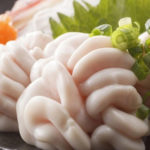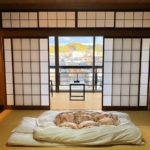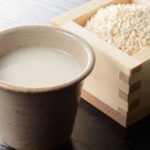Japan boasts a plethora of famous and delicious noodle varieties, including udon and soba. Today, we will introduce you to soba noodles and various dishes featuring these noodles, as well as the proper way to enjoy them.
1 What is Soba?
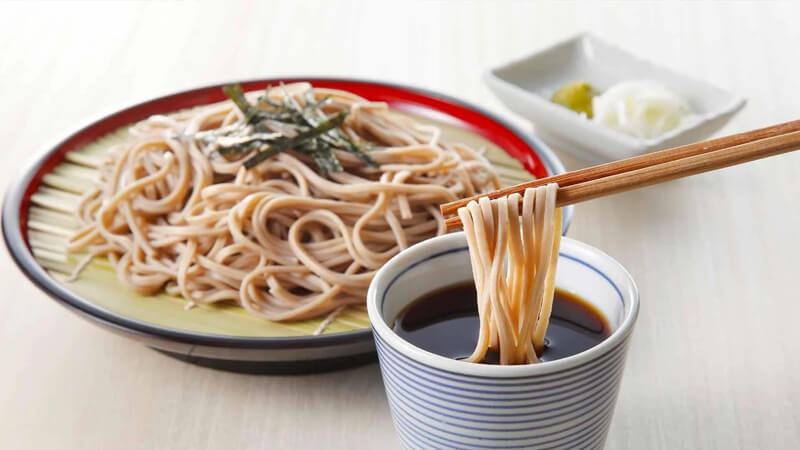 Soba noodles are made with buckwheat flour as the main ingredient
Soba noodles are made with buckwheat flour as the main ingredient
Soba noodles are made from buckwheat flour as the primary ingredient, with thin spaghetti-like strands that are packed with nutritious goodness. These noodles can be enjoyed in a variety of ways, both hot and cold.
Soba is a popular dish in the Land of the Rising Sun, considered a gourmet delicacy in renowned restaurants and also sold in convenience stores. Additionally, various types of dried soba noodles and accompanying broths are available in markets, offering options for both hot and cold dishes depending on the climate and season.
Mori Soba is the most basic type of soba, typically boiled and rinsed in cold water before being served on a square plate, often accompanied by “tsuyu” broth.
There are many varieties of soba noodles, some of which are seasonal, like “Toshikoshi Soba,” specifically eaten on New Year’s Eve to symbolize longevity.
Origin of Soba
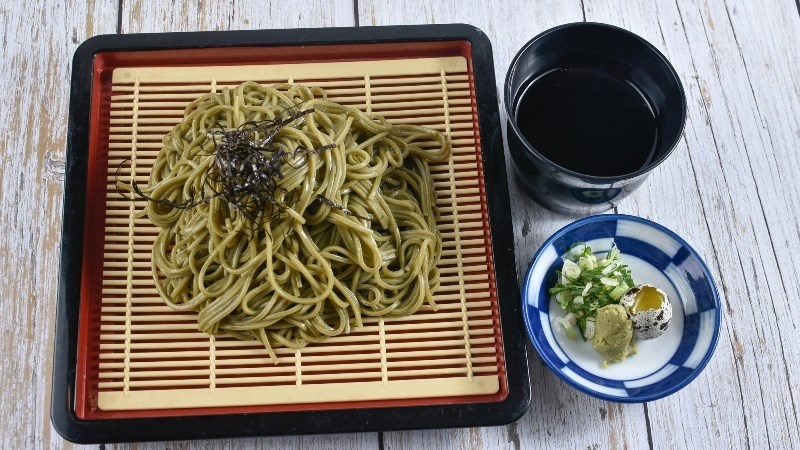 Origin of Soba Noodles
Origin of Soba Noodles
Soba noodles have their origins in the Tokugawa period, also known as the Edo period (1603–1868). During this time, people commonly paired soba with sake for their meals. In each neighborhood, there were typically at least two establishments dedicated to selling this dish.
Despite its affordable price, soba was widely loved because it is rich in nutrients and does not cause beriberi, a common ailment associated with the consumption of refined white rice.
Ingredients for Soba
 Ingredients for Making Soba Noodles
Ingredients for Making Soba Noodles
The primary ingredients for soba noodles are buckwheat flour, with or without a binding agent, and water.
The binding agent is made from wheat flour, and its name varies depending on the ratio of buckwheat to wheat flour. For other types of noodles, binding agents may include eggs (for egg soba), Japanese yam, nori (hegisoba), burdock root, and Oyamabokuchi, among others.
Additionally, there are sesame soba (made with sesame), nori soba (made with seaweed), and matcha soba (made with green tea powder), to name a few.
Some restaurants in Japan also add various seasonal fruits and ingredients to the dough, such as Japanese pepper, bamboo shoots, large leaves, wakame seaweed, and plums.
2 Popular Types of Soba
Cold Soba Dishes
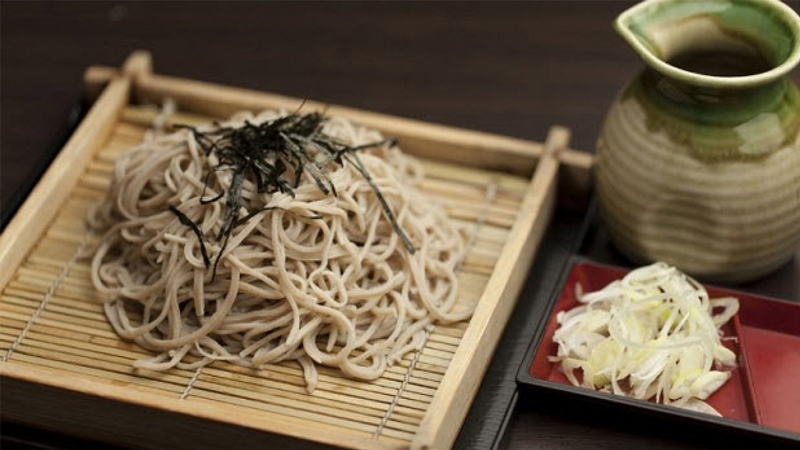 Cold Soba Noodles
Cold Soba Noodles
Cold soba noodles served on a bamboo tray called “zaru” and topped with dried nori seaweed are typically dipped in “soba tsuyu” sauce—a savory blend of dashi, sweet cooking rice wine (also known as “satōjōyu”), and mirin—served on the side.
Here are some additional types of cold soba dishes:
Hiyashi Soba: Cold soba noodles served with various toppings, followed by a pouring of broth. Toppings may include:
Japanese mountain yam (Tororo)
Grated daikon radish (Oroshi)
Fermented soybeans (Natto)
Sliced leeks
Other Soba Varieties
Chilled soba noodles served on a flat plate or in a bowl (Mori soba)
Cold soba noodles wrapped in seaweed (Soba maki)
Cold soba noodles mixed with vegetables and served with a vinegar-based dressing (Salad soba)
Cold soba noodles topped with finely chopped seaweed (Zaru soba)
Hot Soba Dishes
 Hot Soba Noodles
Hot Soba Noodles
Hot soba is typically enjoyed with a hot tsuyu broth and can be seasoned with various ingredients such as sliced scallions and tempura crumbs. Additionally, hot soba offers a range of flavors and can be seasoned with unique ingredients.
3 Regional Variations of Soba
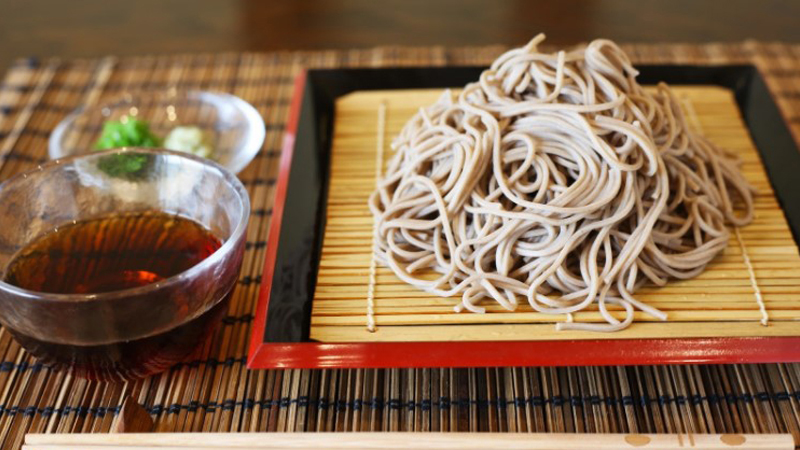 Regional Variations of Soba Noodles
Regional Variations of Soba Noodles
Buckwheat is harvested every three months, and the resulting “shin-soba” has a sweet flavor and a rich aroma. The buckwheat grown in Hokkaido is particularly renowned.
However, the “Shinshu soba” from Nagano Prefecture is also quite famous.
The names of soba noodles can be quite interesting and diverse, often reflecting the region, city, or prefecture, such as:
Etanbetsu soba: Named after Etanbetsu, a region in Hokkaido.
Izumo soba: Named after the city of Izumo in Shimane Prefecture.
Izushi soba: Named after the city of Izushi in Hyogo Prefecture.
Shinshu soba or Shinano soba: Derived from the former name of Nagano Prefecture, Shinshu.
4 Occasions for Eating Soba
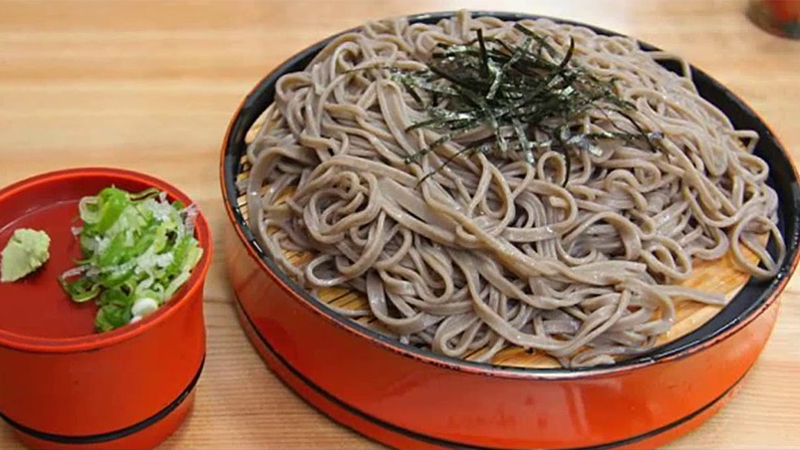 Soba Noodles for New Year’s Eve
Soba Noodles for New Year’s Eve
Soba noodles are traditionally consumed on New Year’s Eve across Japan, and eating these noodles is considered a way to welcome the new year.
Additionally, it is a custom in Tokyo to gift soba liquor to new neighbors, although this tradition has diminished over time.
5 The Proper Way to Eat Soba
For Cold Soba Dishes
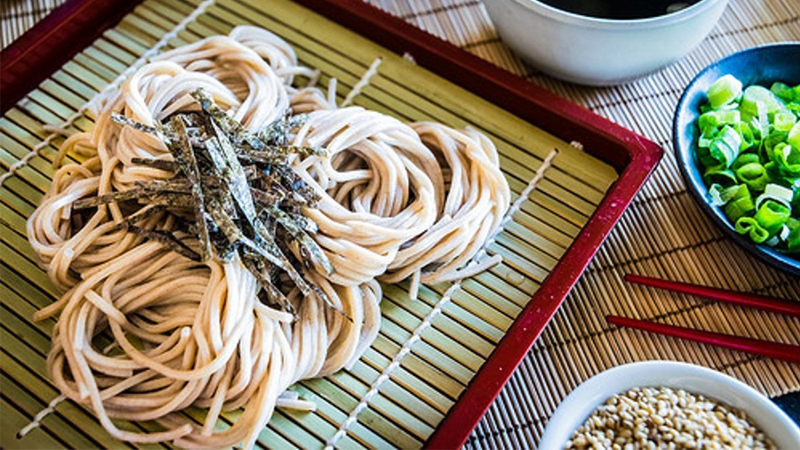 How to Eat Cold Soba Noodles
How to Eat Cold Soba Noodles
The proper way to eat cold soba noodles is quite intricate but will allow you to fully appreciate the flavors of the noodles and the savory tsuyu sauce.
With your first chopsticks, taste the noodle strand.
On your second chopstick, quickly dip the noodle into the sauce and eat it immediately. Although the slurping sound may seem odd, it is considered a way to express how delicious the noodles are in Japanese culture.
After that, you can adjust the sauce to your taste by adding a little soy sauce or wasabi to enhance the flavor.
For Hot Soba Dishes
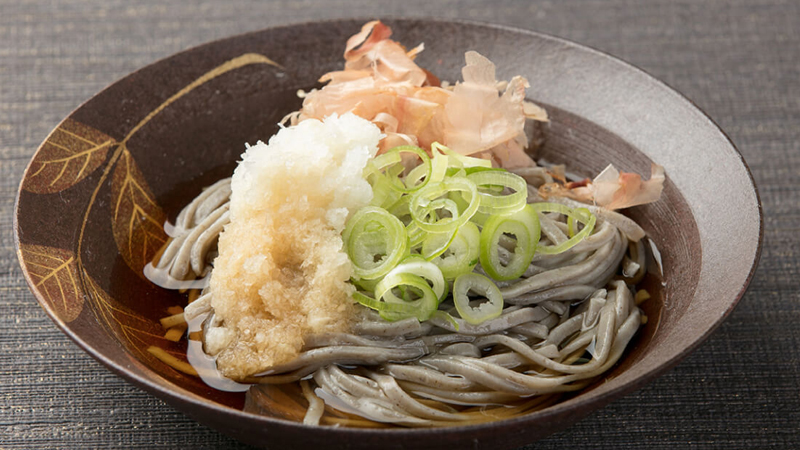 How to Eat Hot Soba Noodles
How to Eat Hot Soba Noodles
Eating hot soba noodles is similar to enjoying bun or pho in Vietnam. You start by dipping the noodles into the hot broth and then adding some stir-fried meat, sliced scallions, chopped tempura, and kamaboko fish cake on top.
6 Slurping Soba? Etiquette Tips for Eating Soba
Slurping Soba?
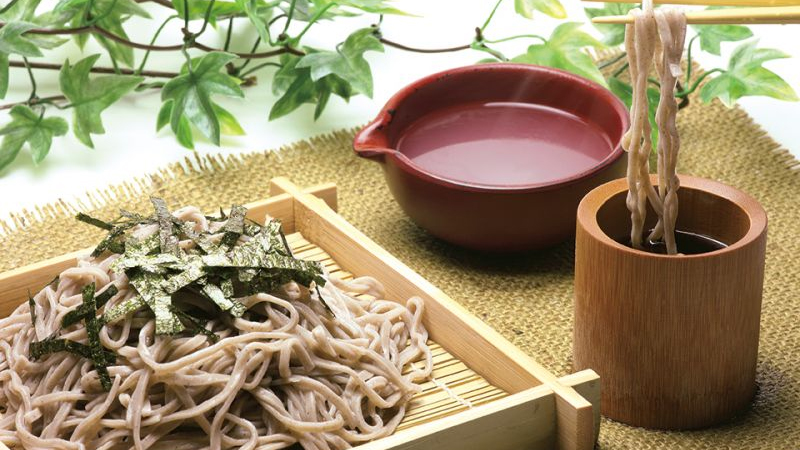 Etiquette Tips for Eating Soba Noodles
Etiquette Tips for Eating Soba Noodles
In Japan, it is common to slurp soba noodles loudly, producing sounds like “Slurp, slurp, slurp” or “Swish.”
While this may sound strange to Vietnamese ears, it is considered a key part of enjoying soba noodles to the fullest in Japanese culture.
Etiquette Tips
Typically, people start with cold soba noodles before moving on to hot soba dishes.
When dipping cold soba noodles, only submerge about one-third of the noodle strands into the dipping sauce.
It is worth noting that there are other dishes in Japan with “soba” in their names, such as yakisoba, chukasoba, and Okinawa Soba, but these are not made from buckwheat.
Making sounds while eating soba noodles is considered a cultural aspect of Japanese dining and is not viewed as rude or impolite.
We hope that this article has provided you with a comprehensive understanding of soba noodles and some of the proper ways to enjoy them when visiting Japan!
Amazake: Japan’s Traditionally Popular Sweet Brew
Amazake, a traditional Japanese fermented beverage, captivates with its unique taste and remarkable health benefits. Originating in ancient times, this sweet and nutritious drink holds a special place in Japanese culture and cuisine. Join us as we delve into the fascinating world of amazake, exploring its origins, production methods, and the myriad ways it can be enjoyed.

























